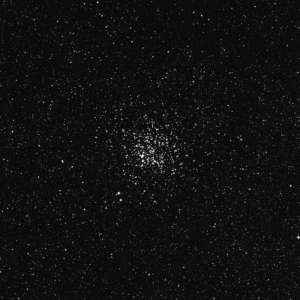
Since the Observatory went back online earlier this year, I’ve had a few months to start working my way through the Messier Objects. While there are literally hundreds of observer lists to choose from, the Messier list is probably the best known and it seems to me to be a good starting point from which to launch an observing programme
While I’ve been into astronomy since early 2000 and steered my interest toward astronomical photography, it’s only since I really started to look through a telescope that I’ve realised how important it is to take your time and really look at what’s in the eyepiece. The modern GoTo telescope tends to get used to find something, you take a quick peek and then’ GoTo’ something else. At Star parties the serious observer rarely seems to get much time to actually look before shouts of ‘Next’ can be heard soon after a scope finds its target.
Meeting Paul Abel at the Winchester weekend earlier this year, he said that even before he picks up his pencil, he spends at least 10 minutes looking at what he is about to sketch. Wise words indeed. Since taking his advice, I’ve tried not to bag as many object in a night as I can, but to pick a couple and spend anything up to an hour – with breaks – to just concentrate on what I’m looking at. His advice has paid off.
After 20 minutes or so, I see things that were not even apparent at the start of the session.
Having sussed this out, the next trick is to try and record all of what I’m seeing in an accurate a way as possible. This is proving to be trickier than I first thought. Firstly you have to orientate your view so you know where ‘North up’ is, and therefore where East and West are. Using the RA control on the Losmandy I can work out my East/West axis, and orientating that in my eyepiece view in Astroplanner, can work out which is which and hence where North up is.
Astroplanner is also able to calculate my eyepiece field of view and give me a figure for that with a tick marked reticule so I can measure rough angular sizes of the object I’m observing. Ok, so now we are cooking as they say!
It all starts to fall apart when you have to record all this stuff. At the moment, I’m writing my notes at the computer in the observatory directly into Astroplanner. All very well, except the light from the screen destroys your dark adapted night vision. Yeh, Yeh, I know, adjust the screen brightness setting on the monitor and use the red night vision settings in the software. All very obvious, except even on a black blank screen, the screen backlighting is still too bright, and the red night settings don’t redden everything on the screen either. This all stuffs my night vision and takes another 10 minutes plus, to start to get it back.
From all this, I can see I’m going to have to devise a system where all the computer work is done at the start of the session – Yeh Right, easier said than done – and log all observations manually at the scope then write the notes up later.
Anyway, all this is proving to be great fun and I’m sure I’ll come up with a system that will resolve all these issues, which in turn will improve the detail and accuracy of my observations.
So what have I been looking at this month then………. perhaps I will leave these for a another day. But in the meantime here’s where I stand with my Messier bagging so far.
| ID | Name | Magnitude | Type | Cons | # Obs |
| M1 | Crab Nebula, Taurus A, NGC1952 | 8.4 | SNR | Tau | 2 |
| M2 | NGC7089 | 7.5 | Globular | Aqr | 1 |
| M5 | NGC5904 | 7 | Globular | Ser | 1 |
| M8 | Lagoon Nebula, Dragon Nebula, NGC6523 | 5 | Open+D Neb | Sgr | 1 |
| M11 | Wild Duck Cluster, Scutum Salt-and-Pepper Cluster, NGC6705 | 7 | Open | Sct | 3 |
| M13 | Hercules Globular Cluster, Great Hercules Cluster, NGC6205 | 7 | Globular | Her | 4 |
| M20 | Trifid Nebula, The Clover, NGC6514 | 5 | Open+D Neb | Sgr | 2 |
| M27 | Dumbbell Nebula, NGC6853 | 7.5 | P Neb | Vul | 2 |
| M33 | Triangulum Galaxy, NGC598, UGC1117 | 6.2 | Galaxy | Tri | 1 |
| M42 | Great Orion Nebula, NGC1976 | 4 | Open+D Neb | Ori | 1 |
| M44 | Praesepe, Beehive Cluster, NGC2632 | 4 | Open | Cnc | 1 |
| M51 | Whirlpool Galaxy, NGC5194 | 8.9 | Galaxy | CVn | 1 |
| M52 | The Scorpion, NGC7654 | 8 | Open | Cas | 1 |
| M57 | Ring Nebula, NGC6720 | 9.5 | P Neb | Lyr | 1 |
| M92 | NGC6341 | 7.5 | Globular | Her | 1 |
| M95 | NGC3351, UGC5850 | 10.6 | Galaxy | Leo | 2 |
| M96 | NGC3368, UGC5882 | 10.1 | Galaxy | Leo | 1 |
| M101 | Pinwheel Galaxy, NGC5457, UGC8981 | 8.2 | Galaxy | UMa | 2 |
| M103 | NGC581 | 7 | Open | Cas | 1 |
| M104 | Sombrero Galaxy, NGC4594 | 9.2 | Galaxy | Vir | 1 |
| M110 | NGC205 | 8.9 | Galaxy | And | 1 |